Have you ever wondered when to use fall and when to use autumn? I wondered so I did a quick search. It turns out, there is no hard and fast rule, but fall is more commonly used in the US. As I sit here in Texas not so fall-ish hot weather, wishing for more bright colors and a crisp breeze, it seems fitting that neither is “correct”. We don’t get fall/autumn anyway… HOWEVER! We will not let it stop us from creating beautiful fall themed artwork! So, I bring you this how to draw leaves project!
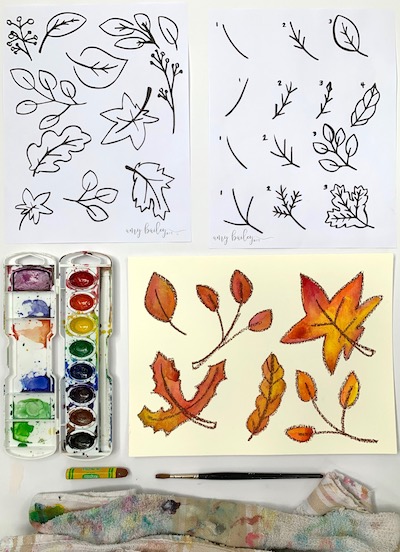
I love this project because it accomplishes several purposes. First, using the “How to draw leaves” printable linked below, you can learn to draw something we see all the time in nature. Use it as a chance to get outside. Maybe take a little bucket with you and gather leaves, look at the differences, talk about the parts of a leaf with your child, make it a nature/science study!
Second, it involves some very simple, essential, and fun color theory! We are using the warm colors. Using a color wheel, point out that red, yellow and orange that are warm. Blue, green and purple are cool colors.
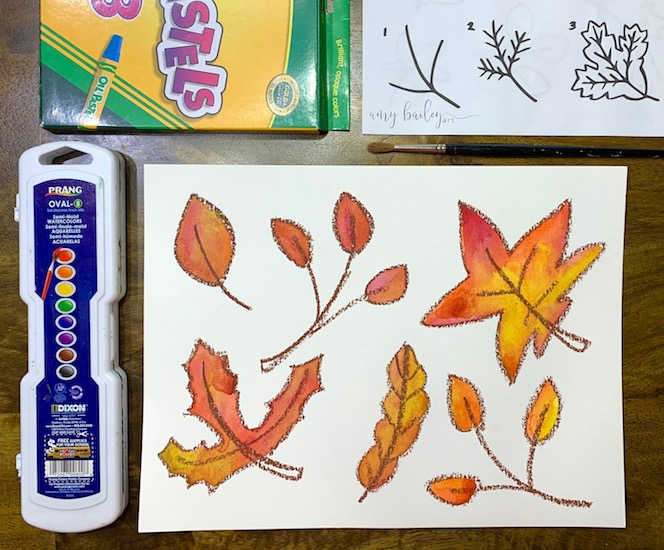
It is fun to ask kids why they think we call them warm and cool colors instead of just telling them. A lot of kids get this answer correct, it’s pretty intuitive!
One important piece of the color theory puzzle is that we use warm and cool colors to divide the color wheel! Be sure to point out how they are grouped together and each group makes up one side of the color wheel.
My favorite part of warm and cool color exploration to talk about with kids is how, in addition to dividing the color wheel, the distinction is primarily emotional and psychological. I love to show them just one group at a time and let them respond to how they feel looking at those colors. The book “My Many Colored Days” by Dr. Seuss is amazing. My love for this book far exceeds its’ usefulness in engaging kids with color theory.

Option for younger children: You can just print off the leaf reference page and let them watercolor. I like to print on card stock so it holds up better with the water and paint.
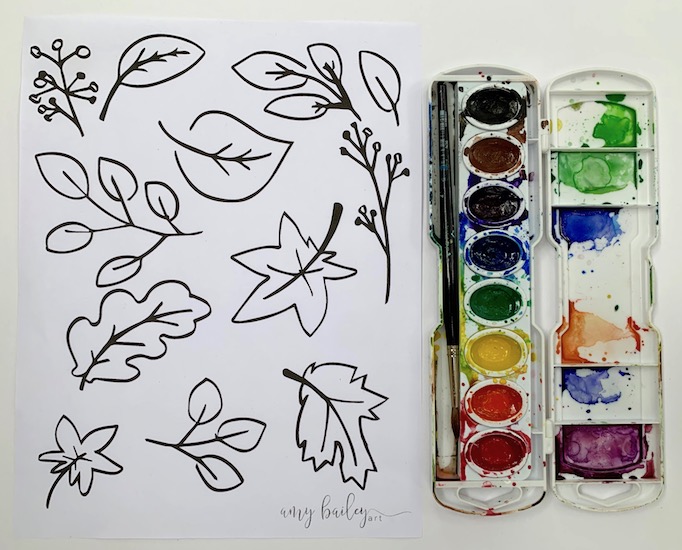
Supplies:
- Watercolor paper
- oil pastel (brown)
- Prang Watercolor Pans - Oval, Assorted, Set of 8 colors
(+ brush)
- Water
- color wheel
- Leaf reference and how to draw leaves printables linked below
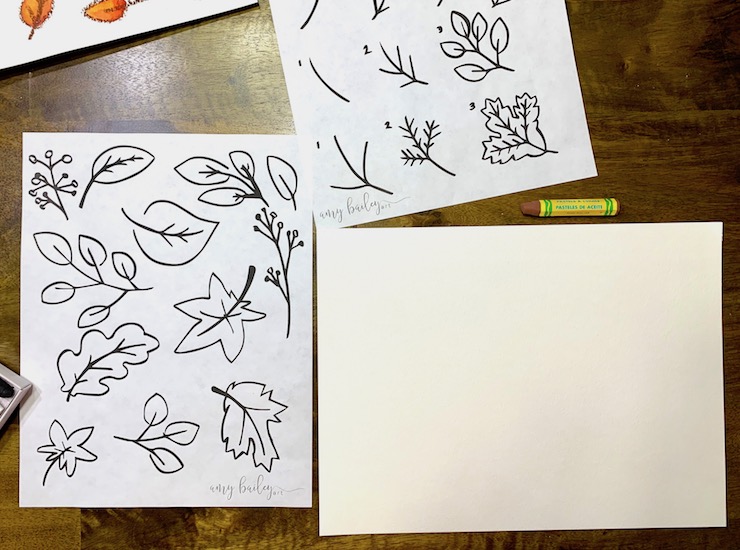
To begin, using a brown pastel on watercolor paper start drawing leaves. You can use the guide pdf, reference pdf, leaves you collected, or any other leaf. This is a good spot to talk about the element of “space”. Filling the page is a good use of space.
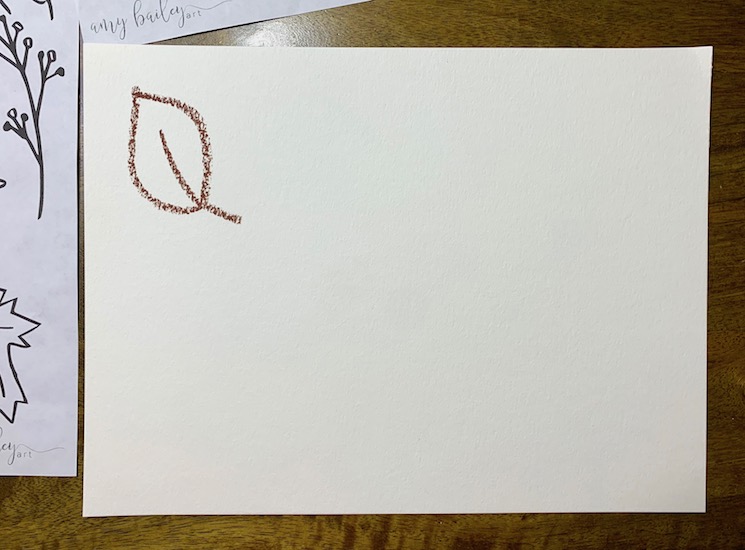
Starting in the corner opposite of your dominate hand is helpful with smudge prone media like oil pastel. It keeps you from dragging your hand over your drawing. So, I usually direct lefties to start at the top right and vice versa.
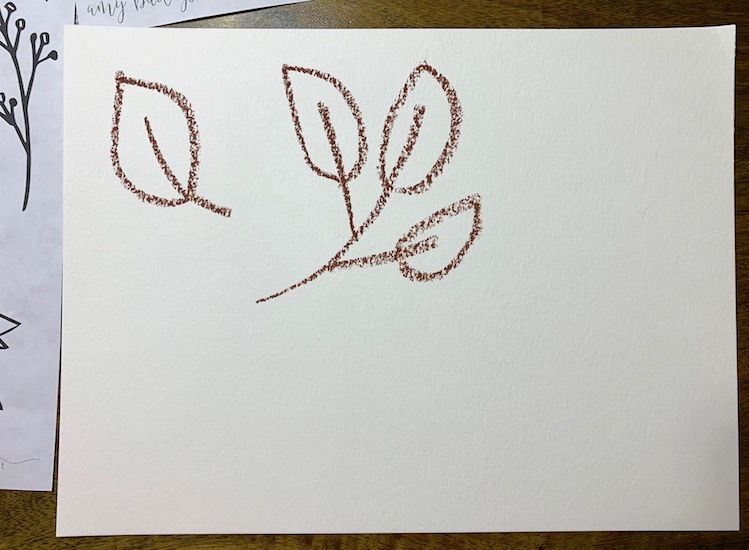
Remember to feel free to exercise your creative freedom and switch up your leaves from the ones in the example.
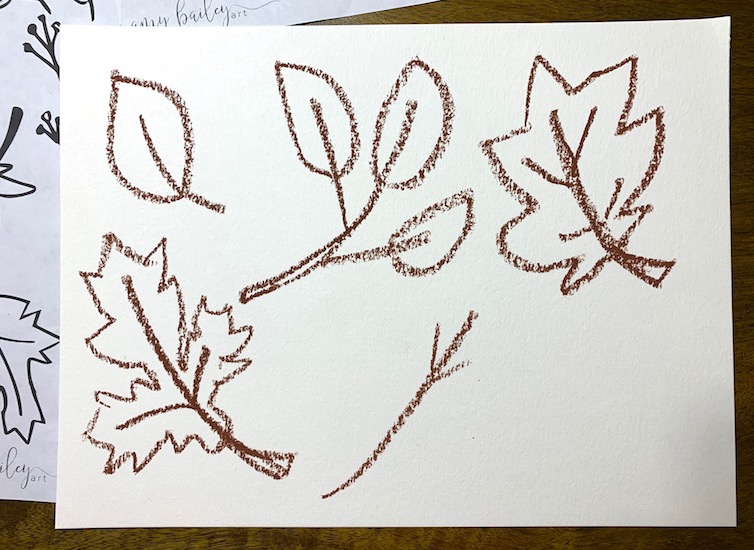
Continue drawing until your space is full and you like the composition you have created.
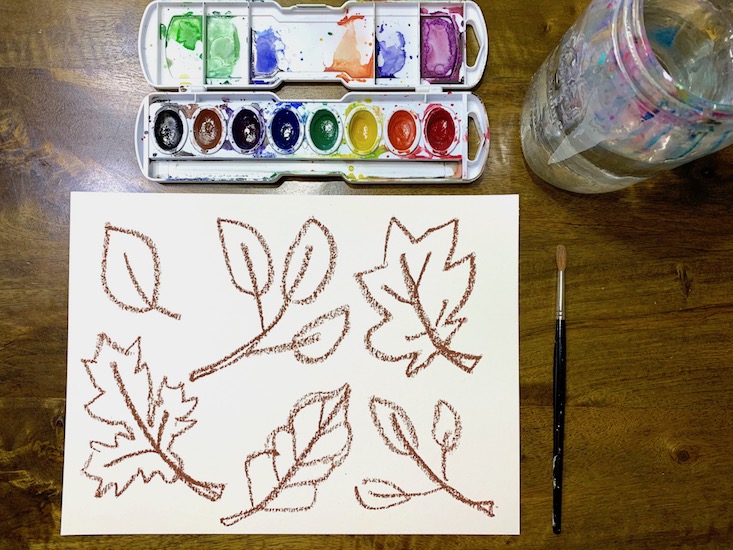
Now, it is time to paint! Set up your paint and get started!
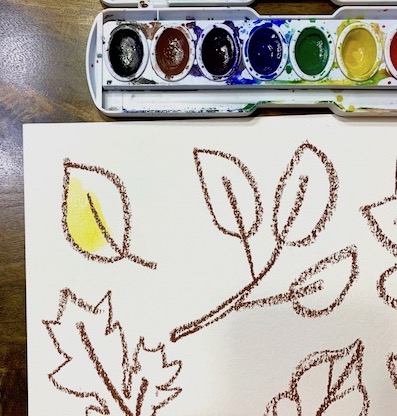
Using the lightest of the warm colors, yellow, start with the first leaf.
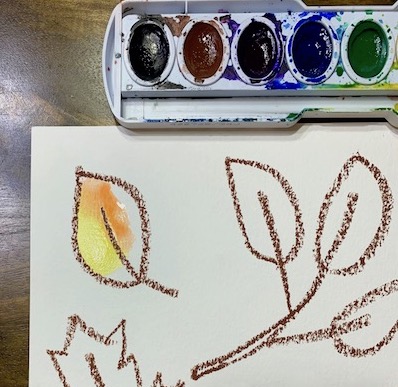
Continue with orange, keeping your paint and brush full of water.
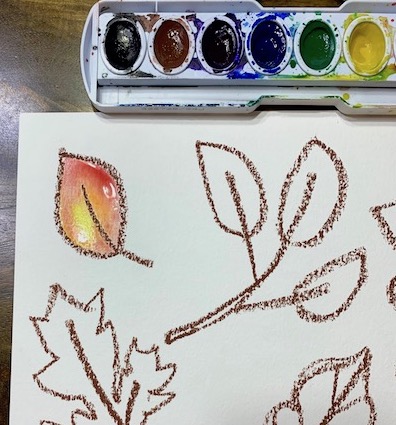
Finally, finish with the darkest warm color, red. If your leaf gets too much of one color or you would like to adjust the color, remember that a cloth or paper towel dabbed on wet watercolor picks up pigment. It is almost like an eraser.

Continue working light to dark on each leaf, filling them with beautiful fall color!
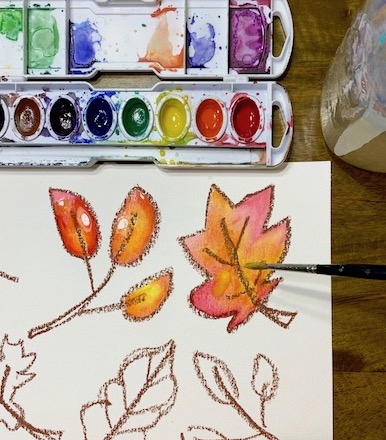
You can play around with technique, try dropping in some color in different places.
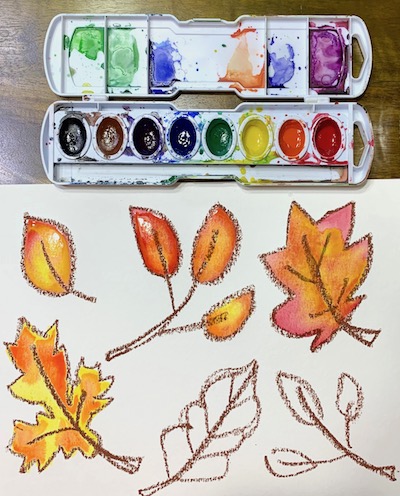
Continue until all the leaves are full of beautiful, warm color!
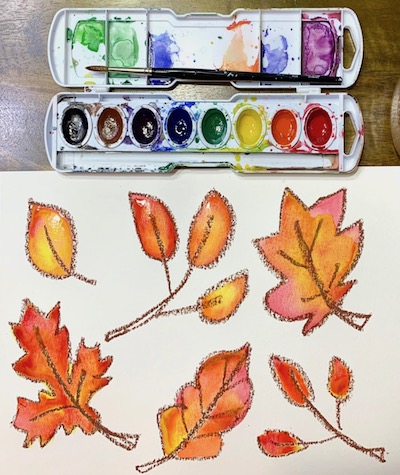
Let your finished Fall Leaf Watercolor masterpiece dry!
I hope you enjoyed this “How to draw Leaves: Fall watercolor painting” art project! We’d LOVE to see YOUR beautiful artwork! Tag me on social media and use the hashtag #amybaileyart or comment below to let me know how it went!
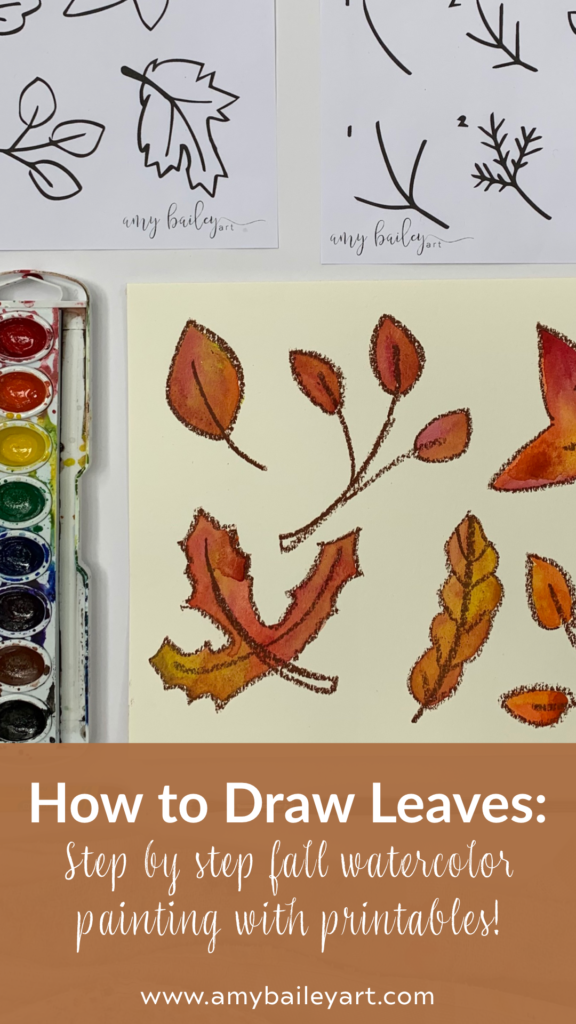
(This post may contain some affiliate links, but all opinions are my own. Because of my commitment to honesty and transparency, I will never recommend a product I have not used and tested myself. Any compensation I may receive helps with expenses to keep this blog up and running! Thank you for your support!)

